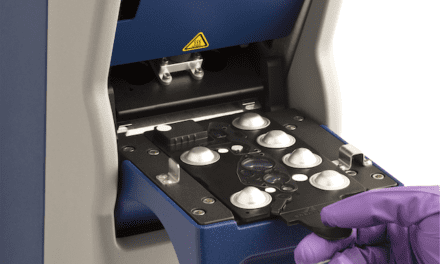A study at the Medical University of South Carolina (MUSC Health) found that use of a mechanical initial specimen diversion device (ISDD) and staff education led to a nearly four-fold decrease in contaminated blood cultures that was sustained over 20 months.
“Working on this study and seeing such strong results speaks to the great things that can happen for patients when clinicians join forces on these issues,” says lead study author Lisa Steed, PhD, a professor in the department of pathology and laboratory medicine at MUSC Health. “Blood cultures, and the accuracy of those cultures, are incredibly important in making sure that patients are getting the right care, at the right time, and with the right process in place.”
Blood cultures help physicians determine whether patients have serious and potentially life-threatening blood infections such as sepsis. But blood draws may become contaminated with bacteria-containing fragments of a patient’s skin that enter the needle during the blood collection process. Studies have shown that conventional techniques can lead to false positives, which may lead to patients undergoing more blood draws, extended length of stay, increased exposure to hospital-acquired conditions, and unnecessary antibiotic treatment.
The mechanical ISDD used in the study, Steripath from Magnolia Medical Technologies, Seattle, is a sterile, closed blood culture collection system that diverts, sequesters, and isolates the first 1.5 to 2 mL of blood—the portion that is known to contain contaminants—during the blood draw.
“We’ve seen a significant reduction of blood culture contaminations in our emergency department by using this device, along with education and training,” says Danielle Scheurer, MD, MUSC Health chief quality officer. “By lessening the chances of contaminating a specimen, we increase our accurate diagnoses and treat patients with real infections. This in turn leads to decreased antibiotic use and allows us to help mitigate the ongoing, nationwide problem of antibiotic resistance from over- or improper use.”
The study also showed that use of the mechanical ISDD could reduce costs and use staff time more efficiently. Researchers suggested that MUSC would have saved $744,955 if the ISDD had been used for every blood draw in the emergency department during the study, based on a conservative estimate ($4,850) for the cost of a contaminated culture.
REFERENCE
1. Church K, Palmer-Long GE, Cumins N, et al [abstract]. Novel blood culture collection device reduces false-positive blood cultures, saves costs, and increases accuracy of bloodstream infection diagnosis. Presentation at the Institute of Healthcare Improvement National Forum, Orlando, Fla, December 11, 2017.







